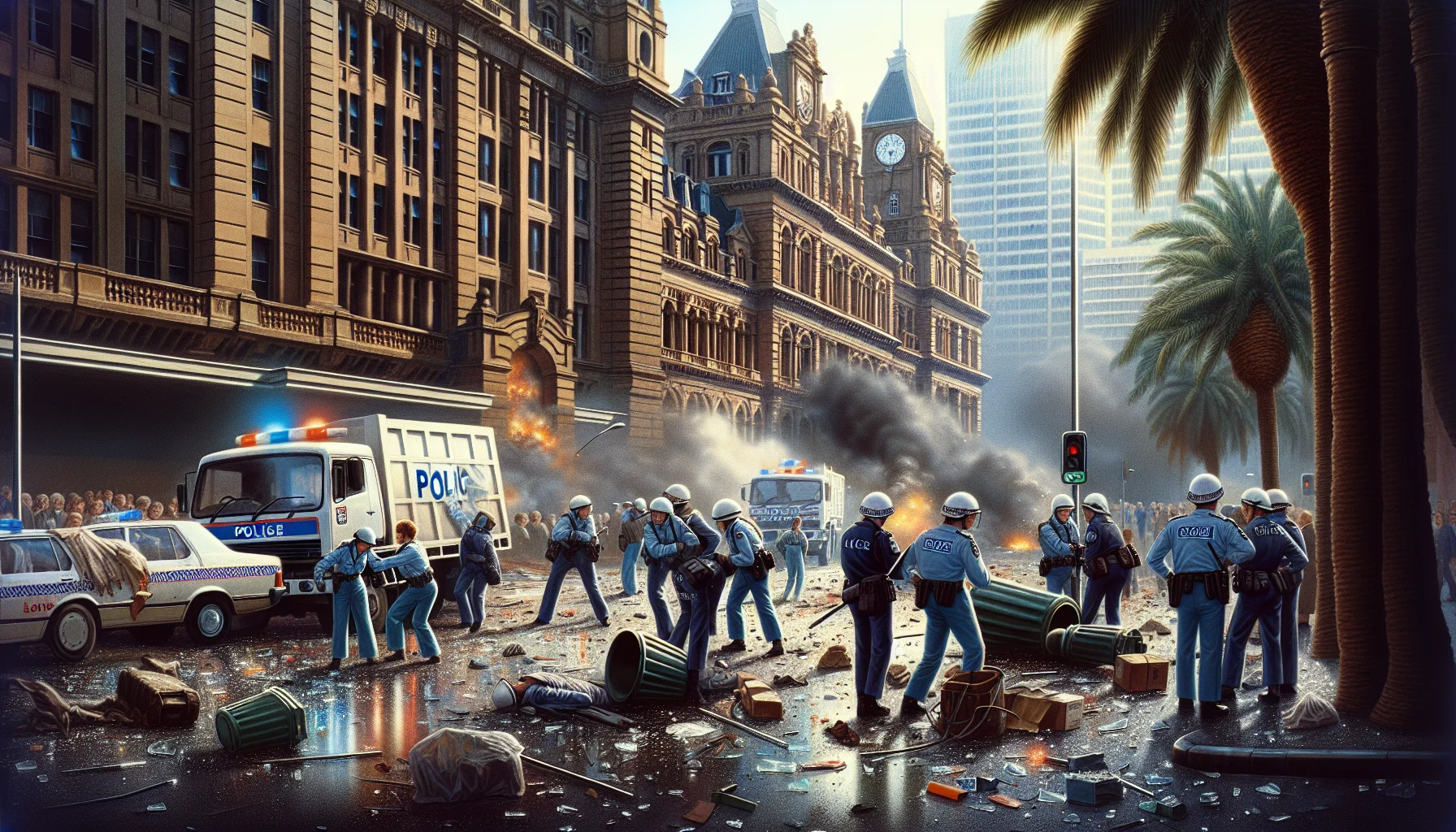
Sydney Hilton Hotel Bombing
by: The Calamity Calendar Team
February 13, 1978
An Ordinary Morning Takes a Tragic Turn
The air was cool on the quiet streets of Sydney as dawn approached on February 13, 1978. Most of the city was still asleep, unaware of the drama about to unfold outside the doors of the illustrious Sydney Hilton Hotel. The hotel was bustling with activity, hosting the high-profile Commonwealth Heads of Government Regional Meeting (CHOGRM). World leaders had converged here, drawing widespread media attention and a significant security presence.
In this early hour, a seemingly ordinary garbage truck trundled along its usual route. The sanitation workers on board, Alec Carter and William Favell, were expecting another routine day, far removed from the whirl of political events taking place nearby. Yet, as their route brought them in front of the hotel, an unsuspected and terrible twist of fate awaited them.
The Explosion That Rocked a Nation
At precisely 1:40 AM, as the garbage truck came to a stop in front of the Hilton, a massive explosion ripped through the mild night, forever altering the serene façade of Sydney's cityscape. The source was a garbage bin lining the footpath, packed with a bomb that detonated with bone-rattling force as the truck lifted it.
The blast obliterated nearby windows, swallowing up the stillness of the night in a torrent of chaos and confusion. Massive shards of glass sprayed across the street; debris rained down as the echoes of the explosion shattered any semblance of calm.
Immediate Aftermath: Lives Lost and Lives Saved
Three unfortunate souls would succumb to this act of terror. Alec Carter and William Favell, who only moments before had been performing their routine duties, were tragically among the casualties. Life snuffed out instantly. Paul Burmistriw, a dedicated police officer stationed nearby, was the third victim of that fateful explosion, caught in the shredding blastwave.
The aftermath was a scene etched into Sydney’s memory: emergency services swarmed the hotel, their lights casting frantic and colorful reflections on broken glass. As the dust settled, an unsettling truth emerged—Australia had borne witness to a heinous terrorist attack, something largely foreign to its shores until that moment.
Thanks for subscribing!
Rescue workers moved quickly, pulling the injured from the debris and rushing them to the nearest hospitals. Those who survived carried cuts and bruises; all carried a deep-seated shock that would take longer to heal.
The Search for Answers Begins
In the explosion’s wake, questions filled the air as heavily as dust from the scattered debris. The international gathering at CHOGRM had turned the Hilton Hotel into a focal point for potential threats, but no one had anticipated such a direct and violent strike.
Initial suspicions fluttered toward the Ananda Marga, an Indian socio-spiritual organization previously eyed with concern over alleged political motives. Yet, despite the swirling allegations, the evidence was as fragmented as the scene itself. Years would pass with accusations but no conclusive proof tying the sect to the bombing.
The lack of clarity frustrated investigators, and it wasn't long before public dissatisfaction made the headlines. The government, under immense pressure, had to reevaluate its approach to counter-terrorism. The calls for heightened security measures grew louder, and so did the discussions over civil liberties.
A Shift in National Security Policy
In response to the attack, the Australian government embarked on a significant overhaul of its approach to security and public safety. The incident thrust the country into an abrupt awakening to the realities of global terrorism, demanding stricter security protocols during major events and visits by international dignitaries.
At a broader level, legislative changes were introduced to augment police powers and resources. This period marked a fundamental shift in how both the government and public perceived safety at events with international footprints. The narrative surrounding national security became a balancing act between ensuring safety and maintaining the individual freedoms Australians cherished.
Trials, Theories, and Unending Mysteries
The courtroom would see its share of drama in the years that followed. Various arrests were made, dragging individuals through legal procedures that seemed destined to frustrate. Criticisms loomed large over the conduct of these trials, with accusations of scant evidence and procedural flaws marring the judicial process.
Eventually, none of the individuals pinned by suspicion faced a conviction that stuck. Time and again, the finger of blame waved through rooms of conjecture only to find itself wanting for proof in the cold halls of justice.
Theories abounded. Whispers of shadowy motives, organized plots, and clandestine groups elwnrged and subsided, yet the case remained officially unsolved. To this day, it serves as a sail billowing with the winds of media speculation and historical research, never taking a definitive direction.
Legacy of the Hilton Bombing
Many decades have passed since the grim morning outside Sydney Hilton Hotel, yet the echoes of the explosion continue to resonate. As the first prominent act of terrorism on Australian soil, it left indelible prints on the nation’s consciousness—shaping security practices and igniting ongoing debates about how best to protect freedom while securing the public.
The tragic loss of Carter, Favell, and Burmistriw is a reminder etched into the annals of history. These victims, who had no connection to the grand political happenings around them, bear silent witness to an unsolved mystery that punctured the serene illusion of safety from global threats.
Indeed, the Sydney Hilton Hotel Bombing stands as a pivotal moment—a stark reminder of vulnerabilities, but also a testament to resilience in the face of fear and the enduring quest for justice in a complex world.
Stay in the Loop!
Become a Calamity Insider and get exclusive Calamity Calendar updates delivered straight to your inbox.
Thanks! You're now subscribed.